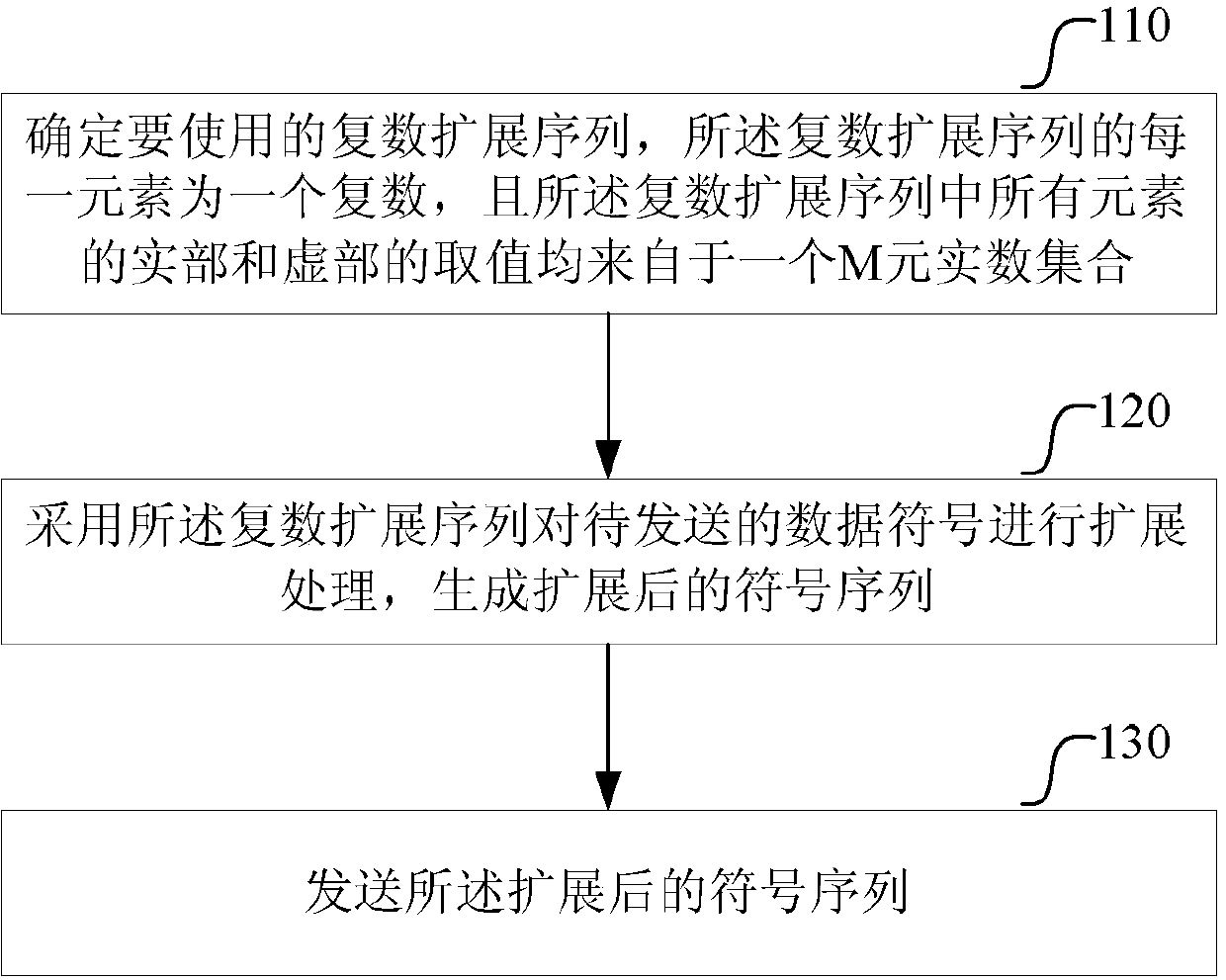Multi-user CDMA (Code Division Multiple Access) communication method and corresponding transmitter and receiver
A code division multiple access and communication method technology, applied in the field of wireless communication, can solve the problems of affecting multi-user access performance, low cross-correlation, not easy to guarantee, etc.
- Summary
- Abstract
- Description
- Claims
- Application Information
AI Technical Summary
Problems solved by technology
Method used
Image
Examples
Embodiment 1
[0116] This embodiment provides a multi-user code division multiple access communication method and a corresponding transmitter and receiver. The transmitter (such as the terminal in the transceiver system, also known as the terminal transmitter) processes the signal such as figure 1 As shown, the data bits to be sent are coded and modulated first to obtain data symbols, and the data symbols are spread with a complex spreading sequence to obtain a spread symbol sequence, which is then modulated by a carrier to form a transmission signal and then transmitted.
[0117] The flow of the multi-user code division multiple access communication method on the transmitter side of this embodiment is as follows figure 2 shown, including:
[0118] Step 110, determine the complex number spreading sequence to be used, each element of the complex number spreading sequence is a complex number, and the values of the real part and the imaginary part of all elements in the complex number spre...
Embodiment 2
[0164] This embodiment relates to a multi-user code division multiple access communication method on the receiver side and a corresponding receiver. The receiver (such as a base station in a transceiver system) receives signals and processes them as follows: Figure 4 As shown in the figure, the signal transmitted by L transmitters is shown in the figure (for the processing when each transmitter transmits a signal, see figure 1 As shown), after wireless propagation in the air, the receiver receives the superimposed signal of the signals transmitted by L transmitters, and the interference cancellation signal detector receives and detects the superimposed signal to obtain the data sent by each transmitter. Preferably, the interference cancellation signal detector is a serial interference cancellation (Successive Interference Cancellation, SIC) signal detector.
[0165] Figure 5 The flow of the multi-user code division multiple access communication method on the receiver side i...
Embodiment 3
[0191] This embodiment provides a method for generating a complex spread sequence. The transmitter generates a complex spread sequence based on two pseudorandom real number sequences. The values of all elements in the two pseudorandom real number sequences come from the example The M-element real number set described in 1 and 2, and the length of the two pseudo-random real number sequences is the same as the length of the complex extended sequence.
[0192] In this embodiment, two pseudo-random real number sequences are independently generated by two pseudo-random sequence generators in the transmitter, such as Figure 7 As shown, the first pseudo-random sequence generator generates a pseudo-random first real number sequence with the same length as the complex extended sequence, and the second pseudo-random sequence generator generates a pseudo-random second real number sequence with the same length as the complex extended sequence.
[0193] In another embodiment, such as ...
PUM
 Login to View More
Login to View More Abstract
Description
Claims
Application Information
 Login to View More
Login to View More - R&D
- Intellectual Property
- Life Sciences
- Materials
- Tech Scout
- Unparalleled Data Quality
- Higher Quality Content
- 60% Fewer Hallucinations
Browse by: Latest US Patents, China's latest patents, Technical Efficacy Thesaurus, Application Domain, Technology Topic, Popular Technical Reports.
© 2025 PatSnap. All rights reserved.Legal|Privacy policy|Modern Slavery Act Transparency Statement|Sitemap|About US| Contact US: help@patsnap.com



